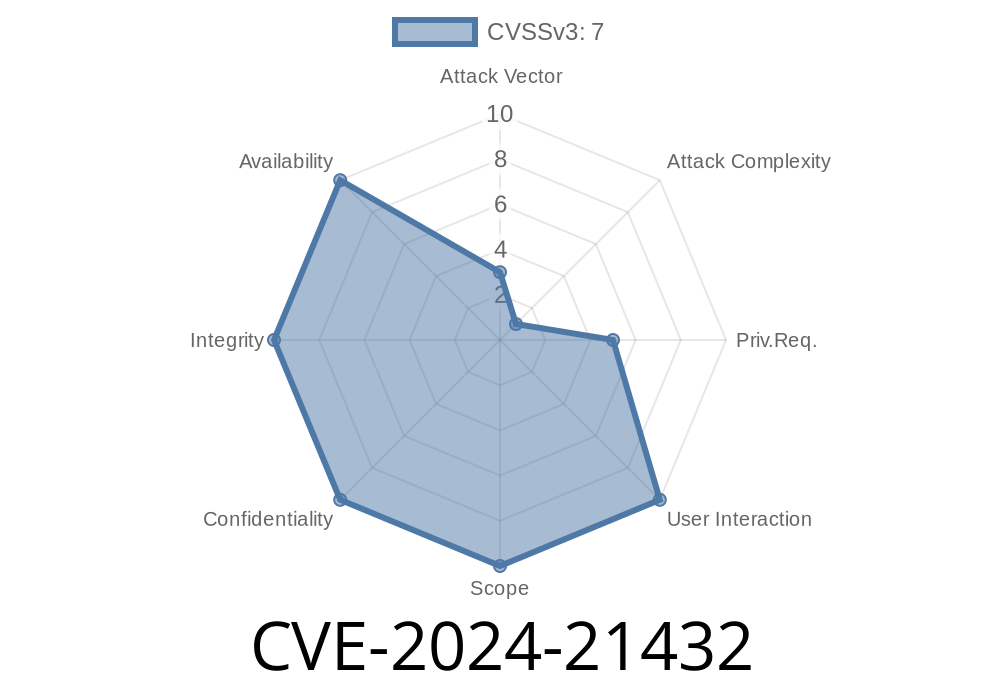Microsoft Windows is a family of operating systems used by millions of users worldwide. As with any software, it is crucial to keep it up-to-date with the latest security patches and updates. However, a vulnerability affecting the Windows Update Stack (CVE-2024-21432) could potentially expose users to elevation of privilege attacks. This article will delve into the details of the vulnerability – how it occurs, its impact, and ways to mitigate its risks.
Background
In the Windows operating system, the Update Stack is responsible for checking, downloading, and installing updates. It ensures that the system is protected against known security vulnerabilities. However, CVE-2024-21432 exposes an Elevation of Privilege vulnerability that could allow a potential attacker to execute code with higher privileges.
Exploit Details
The vulnerability stems from improper handling of file permissions when the Windows Update Stack creates and manages directory and file components within the updating process. An attacker who successfully leverages this vulnerability could potentially execute arbitrary code in the context of the Local System Account, resulting in complete control over the affected system.
Key Components of the Exploit
The exploit involves the attacker abusing the vulnerable Windows Update Stack to create a malicious file/directory with arbitrary permissions on the target system. To illustrate the vulnerability more explicitly, let's look at a code snippet highlighting the offending subroutine:
NTSTATUS VulnCreateDirectory(PWSTR DirectoryName) {
...
status = ZwCreateDirectoryObject(&hDirectory, DIRECTORY_ALL_ACCESS, &obja);
if (NT_SUCCESS(status)) {
...
status = ZwSetSecurityObject(hDirectory, DACL_SECURITY_INFORMATION, AdminDacl);
if (NT_FAILED(status)) {
ZwClose(hDirectory);
}
}
return status;
}
Notice the DIRECTORY_ALL_ACCESS flag and the AdminDacl security descriptor passed to the ZwSetSecurityObject() function. This combination inadvertently grants the created directory dangerously permissive access controls, which can then be exploited by attackers.
For further information regarding this vulnerability, please consult the following resources
1. Microsoft Security Advisory
2. Exploit Database
3. National Vulnerability Database (NVD)
Mitigation Strategies
The immediate recommendation to mitigate this vulnerability is to apply relevant security updates provided by Microsoft. Refer to the Microsoft Security Advisory for details on the affected systems and necessary patches.
In addition to applying the security update, the following best practices can help reduce the risks associated with this vulnerability:
1. Employ the principle of least privilege: Ensure that users and applications run with the minimum necessary access levels.
2. Regularly audit system permissions: Routinely review and adjust access controls to minimize potential abuse points.
3. Monitor system logs: Inspect event logs for suspicious activities that could indicate an exploit attempt.
Conclusion
CVE-2024-21432 demonstrates how a seemingly innocuous error in handling file permissions could lead to a dangerous elevation of privilege vulnerability. By understanding the underlying cause and implementing available security updates and best practices, users can protect their systems against potential exploits. Always maintain a proactive, vigilant stance when it comes to software updates and system security.
Timeline
Published on: 03/12/2024 17:15:51 UTC
Last modified on: 03/12/2024 17:46:17 UTC
